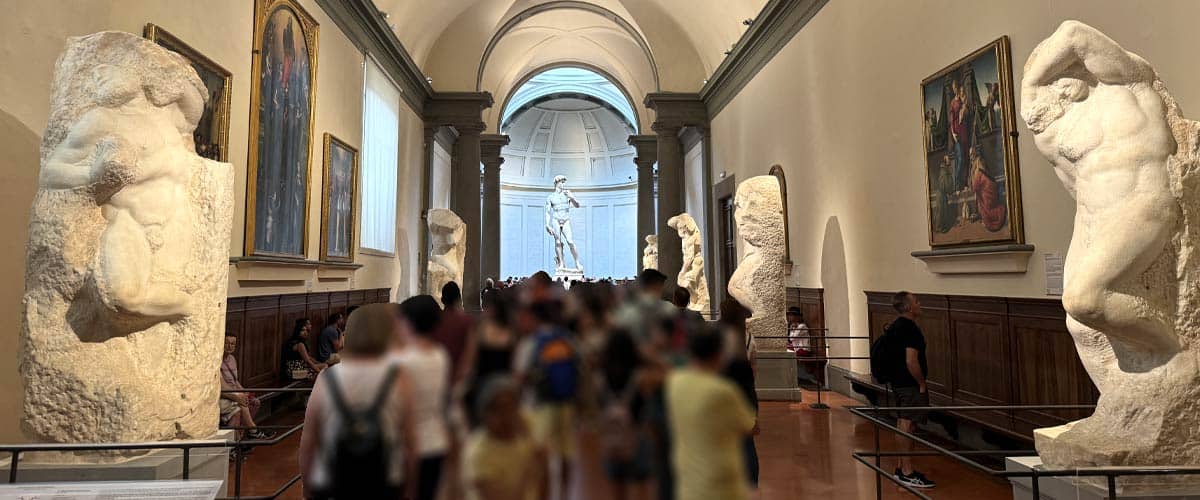
The Emotional Power of Michelangelo Unfinished Sculptures
Michelangelo was no ordinary artist. He was a titan, a genius who sculpted marble as if it were clay. He painted ceilings as if they were canvases, and architected buildings as if they were poems. His work, from the raw power of David to the divine beauty of the Sistine Chapel, continues to inspire and impress centuries later.
Yet, there’s an intriguing part of Michelangelo: his unfinished works. Michelangelo’s unfinished sculptures provide a special look at his creative method. They show how detailed and ambitious he was.
These unfinished projects aren’t simply forgotten works, they’re insights into the thoughts of a great artist.
The Reasons Behind Michelangelo Unfinished Sculptures
Michelangelo’s incomplete sculptures didn’t come from laziness or lack of effort. No, they showed his non-stop push for excellence. Michelangelo was famous for his laser-sharp attention and love of big undertakings. He always pushed his limits.
He left sculptures incomplete, mainly due to his ever-evolving direction. Often, he jumps into a new task before he finishes up the previous one. His driving force? A shifting art vision. Michelangelo’s unfinished works are also a result of outside factors he couldn’t manage.
Projects stopped suddenly due to shake-ups in politics or shifts in sponsors, or the artist’s deteriorating health. Whatever the cause, Michelangelo’s unfinished masterpieces show us his amazing genius. Each one makes clear his unyielding commitment to excellence and constant devotion to his art.
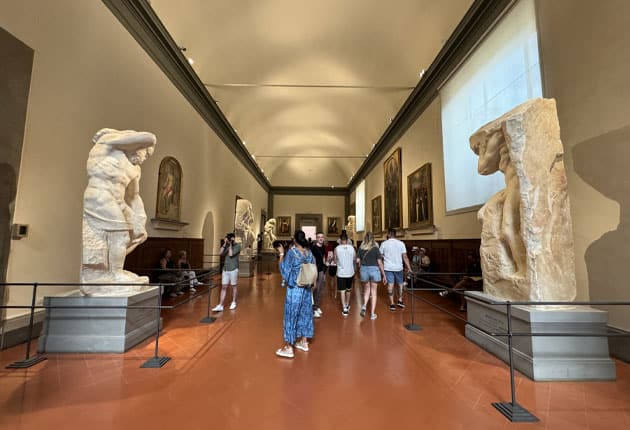
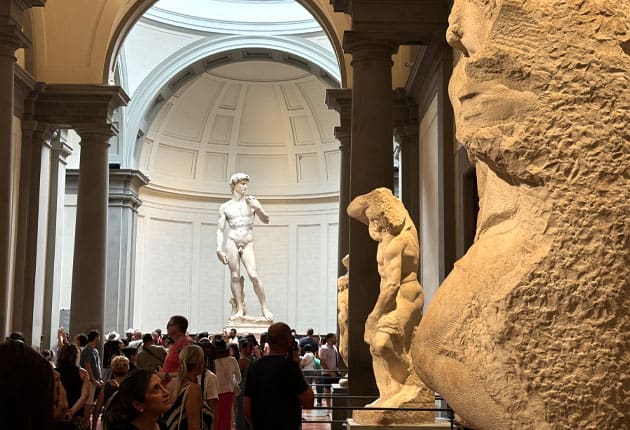
Michelangelo Unfinished sculptures: the prisoners or Slave
Among Michelangelo’s most impressive unfinished sculptures is his series of slaves, originally intended for Pope Julius II’s tomb. These powerful, partially completed figures have become some of the artist’s most famous and admired creations. They can be found in various museums and galleries around the world.
The “Dying Slave” is perhaps the most famous of Michelangelo’s unfinished slaves. Representing a figure in anguish and struggle, the sculpture’s haunting, unfinished appearance emphasises the sense of emotion and tension Michelangelo captured. The “Dying Slave” is currently housed at the Louvre Museum in France, where it has become a beloved and heavily studied work of art.

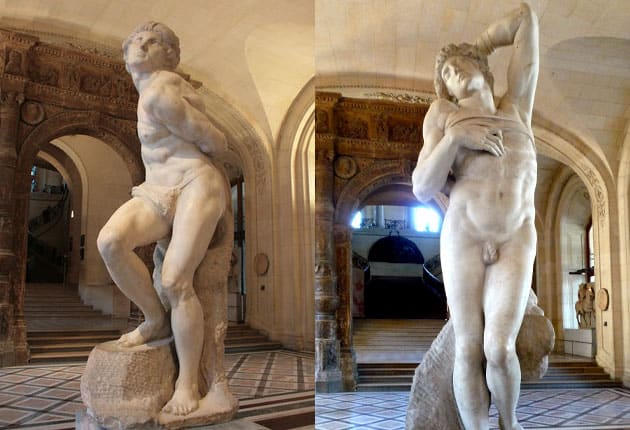
The “Rebellious Slave” showcases Michelangelo’s exceptional skill in representing the human figure in dynamic movement and resistance. The partially carved figure struggles against its marble confines, highlighting the artist’s mastery of anatomical detail and ability to convey palpable energy. The “Rebellious Slave” can be found in the Louvre Museum alongside the “Dying Slave.”
The “Atlas Slave,” a third unfinished slave sculpture, is a tribute to Michelangelo’s ambition and desire to push his craft’s boundaries. The figure, intended to support the tomb’s architectural elements, is captured in a profound struggle. Its muscular form strains against the burden it must bear. The “Atlas Slave” is currently housed at the Accademia Gallery in Florence, Italy, and displayed alongside Michelangelo’s iconic David statue.
Two additional unfinished slave sculptures, the “Unfinished Slave” and the “Awakening Slave,” are at the Accademia Gallery in Florence. Like the others in the series, these figures showcase Michelangelo’s exceptional talent for capturing the human form in various states of completion and emotional expression.
These unfinished slave sculptures are testimony to Michelangelo’s enduring genius and ability to infuse his works with emotion and humanity. This is even in their incomplete state. They continue to fascinate and inspire art lovers and scholars alike, offering an exclusive window into the artist’s creative process and the evolution of his artistic vision.
Another captivating unfinished sculpture is the “Resurrection of Christ,” which the artist started but never completed. This work, intended for Pope Julius II’s tomb, is a testament to Michelangelo’s ability to convey religious drama and power through his sculptural mastery.
Michelangelo’s unfinished paintings are equally striking. “Entombment,” a depiction of Christ’s burial, is a masterful example of the artist’s unparalleled skill in rendering the human form and conveying the emotional weight of a religious subject.
Rather than being seen as failures, these unfinished works are now celebrated as some of Michelangelo’s most compelling and captivating creations. They offer a unique window into the artist’s creative process and artistic evolution.
Michelangelo Unfinished Sculptures in Accademia Gallery Florence
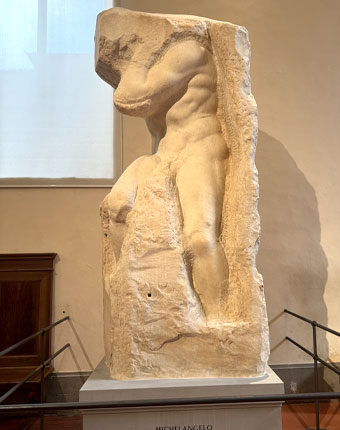

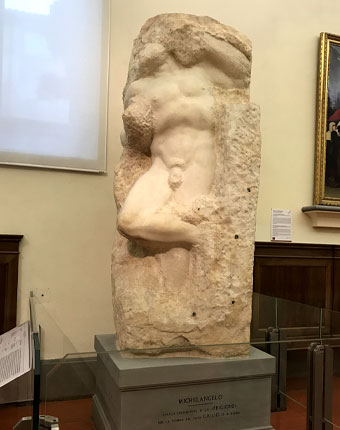
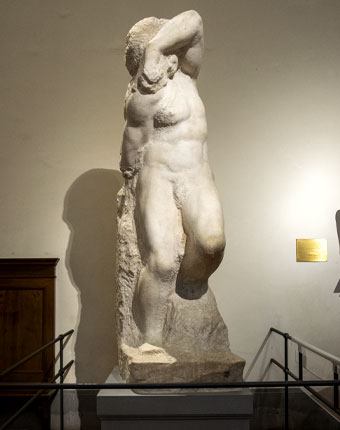
The Enduring Legacy of Michelangelo’s Unfinished Sculptures
Michelangelo’s unfinished sculptures are quite popular! Artists and thinkers alike find them inspiring. Despite their partial completion, they offer valuable insight into the mind of an artistic genius. Studying these works is like peeking behind the curtain of creativity. It also reveals that amazing artists run into problems.
Different theories have emerged about why these works were left unfinished. Some people think Michelangelo had a reason, like making an artistic point or shaking up traditional ideas of “finished” art.
Other artists have even been influenced by his unfinished works. They’ve started to see “unfinished” as a valid state in the creative process, rather than just a step towards a final product.
Today, people still respect and appreciate Michelangelo’s unfinished masterpieces. Because of the unique perspective they provide on the artist, they have a great deal of artistic value. Art enthusiasts, scholars, and fellow artists love these pieces, making sure that Michelangelo’s brilliant legacy will stick around for a long time to come.
FAQ about Michelangelo Unfinished Sculptures
Why did Michelangelo leave some of his works unfinished?
Michelangelo’s unfinished works were not the result of laziness or lack of dedication, but rather a testament to his unwavering pursuit of perfection. The artist constantly evolved, often starting new projects before fully completing previous ones, driven by his ever-changing artistic vision. Additionally, external factors such as political upheavals, changes in patronage, or the artist’s declining health in his later years sometimes led to the abrupt halting of commissioned projects.
What happened to Michelangelo’s unfinished sculptures and paintings?
Many of Michelangelo’s unfinished sculptures and paintings have been preserved. They are now celebrated as some of his most compelling and captivating creations. Works like the “Dying Slave,” the “Resurrection of Christ,” and the “Entombment” are now showcased in museums and art galleries around the world, offering a unique window into the artist’s creative process and the evolution of his artistic vision.
How did Michelangelo’s unfinished sculptures influence the art world?
These incomplete masterpieces have become the subject of intense study and fascination, as they reveal the inner workings of a creative genius and the challenges that even the most accomplished artists face. They have also sparked a greater appreciation for the creative process instead of solely focusing on the final product. They have inspired other artists to embrace the concept of the “unfinished” and explore the creative potential of works in a state of flux.
What insights can we gain from studying Michelangelo’s unfinished sculptures?
Studying Michelangelo’s unfinished masterpieces can provide valuable insights into the artist’s creative process, his relentless pursuit of perfection, and the challenges that even the most accomplished artists face. These incomplete works reveal the meticulous attention to detail, the ambitious nature that drove Michelangelo’s artistic vision, and the external factors that sometimes led to the abrupt halting of his commissioned projects.

Michelangelo’s Final Resting Place in Santa Croce
In the heart of Florence stands the Basilica of Santa Croce — often called the “Temple of the Italian Glories.”…

Michelangelo’s Death: From Rome to His Final Rest in Florence
On February 18, 1564, Michelangelo Buonarroti died in Rome at age 88. His passing marked the end of an era…

I Am Michelangelo, and This Is the Story of My Life
I Am Michelangelo, and This Is the Story of My Life I am Michelangelo Buonarroti, sculptor, painter, architect, and, above…

Visiting the Accademia Gallery? Don’t Make These Mistakes
Visiting the Accademia Gallery 2025? Don’t Make These Mistakes The Florence Accademia: You’ve probably heard about it and seen photos.…

Michelangelo vs. Leonardo da Vinci: Comparing the Renaissance Masters
Michelangelo vs. Leonardo da Vinci: Comparing the Renaissance Masters Let’s talk about two giants of the Renaissance: Michelangelo and Leonardo…
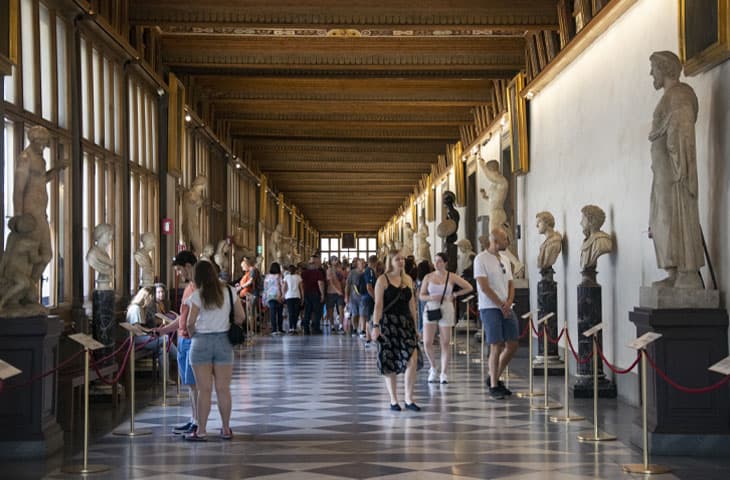
The Best Museum in Florence for Art Lovers
The Best Museum in Florence for Art Lovers Florence, the cradle of the Renaissance, is home to some of the…
Links you might find useful
Tickets & Tours
Accademia Gallery
Visitor Information
Opening Hours
Tickets and Tours
Accademia Online
Radio Accademia
Florence Attractions
Uffizi Gallery
Duomo Florence
Palazzo Pitti
More Florence Attractions

